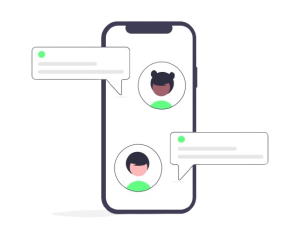Healthcare stands on the edge of a people-versus-technology tightrope act. On one end looms the warm, personalized support of compassionate human providers. On the other, the efficiency and expansive knowledge of artificial intelligence systems. Walking this tightrope to optimize healthcare will require dexterity. How do we embrace cutting-edge tech while preserving irreplaceable human care?

Patient-provider relationships defined medicine for aeons. The therapeutic bond between healer and sufferer manifests medicine’s art. Yet today, healthcare’s crossroads of humanity and technology grows more complex. From robotic surgery to symptom-checking chatbots, technology’s siren call lures with the promise of automation, personalization, and consistency. How resistible are these benefits for strained healthcare systems and overworked professionals?
As with any pendular swing, balance is everything. While digitized, data-driven treatment opens new possibilities, the pitfalls of over-indexing on technology loom darkly as well. Will the healthcare humans of tomorrow be rendered as obsolete as lamp lighters and town criers?
Let us tread carefully.
The Allure of Seamless Tech Support
Adopting the latest medical tech often appears prudent on the surface. Mobile health apps remind patients to take meds, monitor chronic conditions, and survey side effects. Machine learning systems uncover clinical insights from vast datasets. Robotic capsules endoscopically travel our insides, beaming HD transmissions.
The list grows exponentially, and the benefits seem self-evident: reduced administrative loads, algorithmic efficiency, customizable engagement, early risk detection, and real-time care access from anywhere. Seamlessly integrated, technology could enhance healthcare’s granularity and consistency while slashing waste. For time-crunched doctors juggling way too many patients, handing certain basic tasks off to tech likely looks pretty darn appealing!
Cause for Caution
But before we dive head first into a breathtaking technological waterslide, what could we smash headlong into?
While digitized systems analyse data points with supercomputer speed, they lack human contexts. The limiting language of code translates the world into binary constraints. But patients – in all their messy, nonlinear, subjective complexity – defy algorithmic boxes. Technology excludes vital sociocultural backdrop from its clinical calculus. And when has exclusion ever served health?
Over-reliance on tech also corrodes sacred patient-provider bonds that form the heart of care. Reducing doctors to robotic diagnostic drones disrespects their years of accumulated wisdom and skill at tactfully navigating fragile, vulnerable spaces. So too might patients feel dehumanized when expected to entrust intimate details to disembodied chatbots. Where is the reassurance of a gentle healer’s touch there?
Make no mistake, technology holds monumental potential to heal at scale when thoughtfully applied. But, applied thoughtlessly by institutions seeking efficiency above all else? Disaster. Because corners cut by algorithms unchecked by human oversight can profoundly impact already marginalized groups. Expediency should never override ethics.
Moving Forward Mindfully
Rather than framing this issue as a false dichotomy of “technology versus touch,” we must thoughtfully integrate compassion and code. Tech should not supplant doctors but support them – absorbing rote tasks to free up their time for deeper bonds with patients. The ideal system maximizes both human and algorithmic strengths symbiotically.
Training longitudinal care teams of providers, social workers and algorithmic aides allows relationships to flourish while still enhancing care continuity. Hospitals might maintain dedicated monitors evaluating tech for bias and routinely refreshing algorithms using diverse sample data. And medical institutions could enact policies giving clinicians authority to override flawed AI recommendations when needed.
By centering ethics equally with efficiency, modern medicine can nurture technology’s promise while circumventing its perils. But this requires proactive efforts to keep our healers warmly human. Medicine must never forget its soul – only enhance it through tech thoughtfully applied.
Moving forward, we should approach novel healthcare technology with cautious optimism, wide sociocultural perspective, and visions of empowered patients and providers united, not divided. Together, not telehealth alone. High-tech supporting high touch. This balancing act demands mindfulness, but done right, we may just stick the landing.

